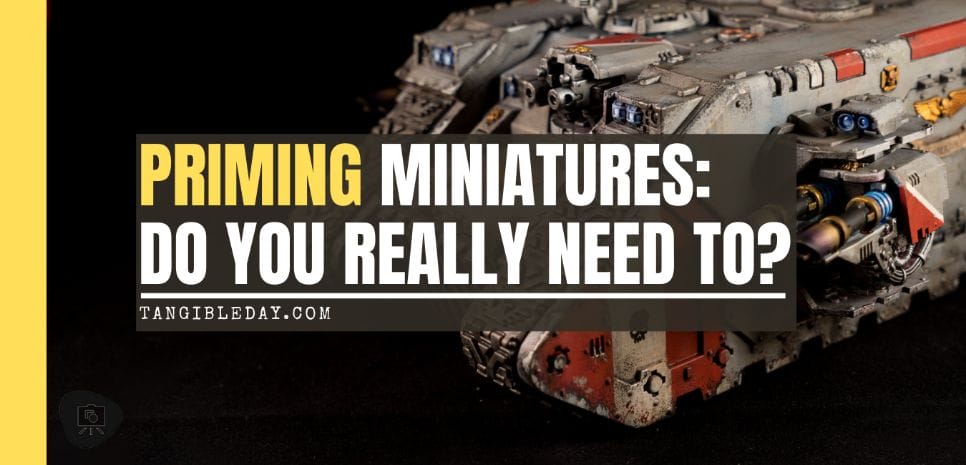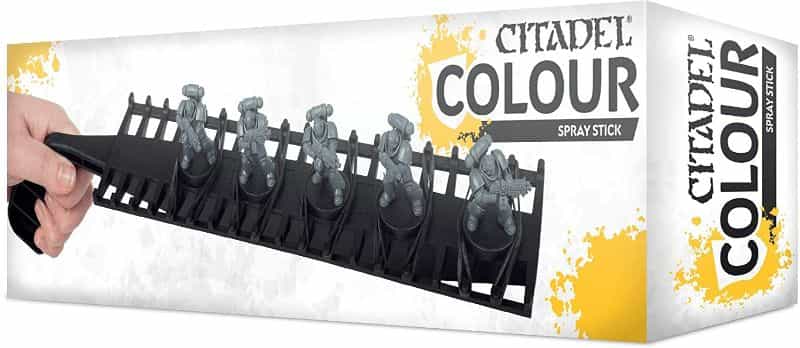Do you need to prime your miniatures and models before painting them? This is a common questions for new painters. There are three reasons why you should prime your models before applying any hobby paint. Priming helps paint stick to the miniature’s surface, protecting the durability of the paint. A good primer also smooths out uneven textures, which can help make painting more enjoyable and help you apply advanced techniques. Finally, a quality primer will provide you with an even color tone over the entire model. This will help you see natural contrast (light and shadow) on the miniature as you paint.
Key Points: 3 Reasons to Prime Miniatures and Models
- A primer makes it easier to paint any plastic, resin, or metal miniature, because it creates a protective barrier that helps paint adhere better to the surface
- Priming evens out surface texture so that a model’s surface is less bumpy and smoother for painting, which can help you perform more advanced painting techniques
- Priming a model will give you an even, non-reflective surface tone, so you can see the natural contrast of your model as you apply paint
Read on to learn more about why you should prime your models.
What is The Purpose of Priming a Miniature?
Priming is a step in the painting process that helps seal the model and prepare it for paint. It gives you a nice, even base color tone to start with. A primer will provide you with a matte, non-reflective surface that adds “tooth” and helps paint adhere to your model. In other words, a primer acts as a glue for your paint to hold on to any uneven surface of plastic, resin, or metal miniatures.
Often during the manufacturing of the model parts and kits, surface imperfections appear, such as bubbles, cracks, and other unwanted textures. You may not even see some of these problems, but they can wreak havoc during painting. A good primer application will smooth out these annoying artifacts, and help make painting more enjoyable!
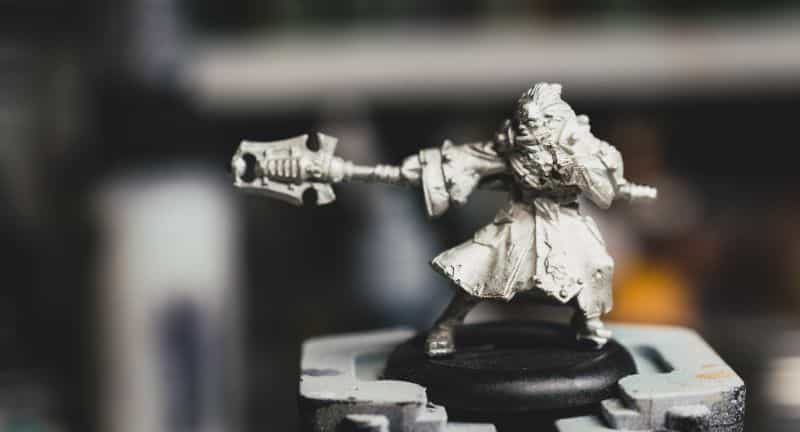
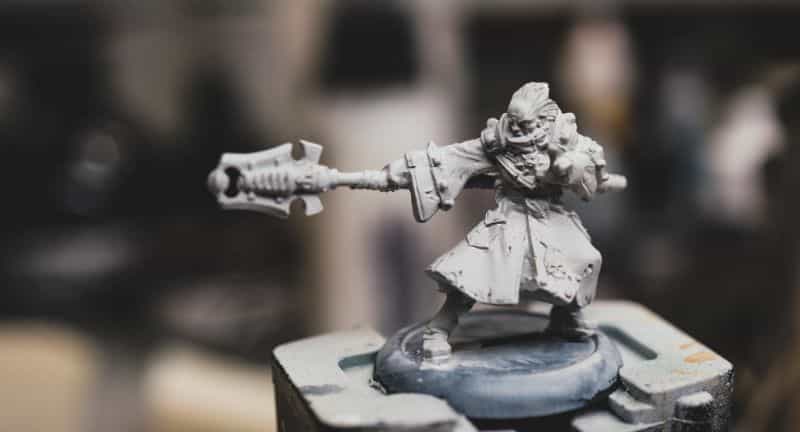
Do I Need to Prime Plastic, Metal, or Resin Miniatures?
Priming a model helps paint stick and gives any paint job long-term durability. This is especially important if you’re handling and moving your painted miniatures during gameplay. I play a lot of tabletop games at local game stores and conventions. And, in my experience, paint chipping and peeling when you’re not home is the most annoying thing to happen.
A quality primer along with a good varnish sealant over your models can reduce this issue from happening. Certainly, you’ll need to prime miniatures for tabletop games like Warhammer 40k, or any other army tabletop wargame, as I expect these painted models will undergo quite a bit of abuse.
Without a primer, even the very best acrylic paint will chip and flake off in no time during handling, transportation, or even while you are painting the model!
Here are some primers that I use to start my miniature painting work:
| Image | Product | Features | Price |
|---|---|---|---|
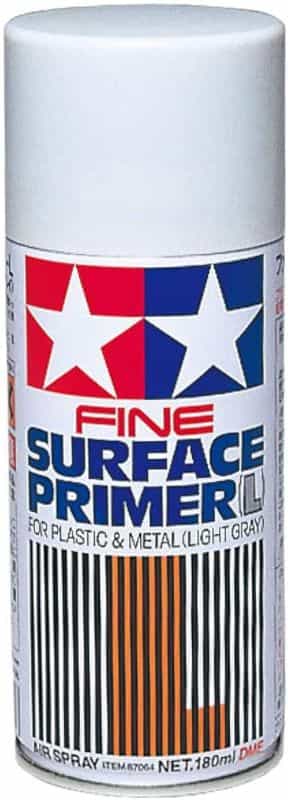 |
Tamiya Fine Surface Primer | • A quick and easy way to get a smooth surface before painting • This spray primer can be used on both metal, plastic, and resin model surfaces • Comes in multiple other colors |
Check Price |
 |
AK Interactive Primer and Microfiller | • Ultrafine high quality auto-leveling primer • Can be diluted with AK470 Xtreme Cleaner/Thinner • Great gripping force and resistance • Ready to be applied by airbrush |
Check Price |
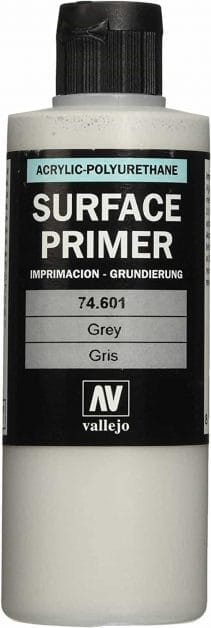 |
Vallejo Surface Primer | • The Vallejo surface primers are water based, polyurethane • This is a great option for beginners who are looking to start painting their miniatures or models • It is able to be used directly by applying it with brush or airbrush • Fully compatible with most paints types: enamels, water colors, acrylics, lacquers, etc. |
Check Price |
How Do You Prime Miniatures Without a Spray Primer?
Priming your models is a simple, yet necessary step for any good painting project. There are many ways to prime miniatures without using spray primers.
Some prime with the more traditional brush primer or by using an airbrush with thinned water-based surface primers. My favorite primer for these methods is Vallejo Surface Primer (see the full-review).
RELATED: BEST PRIMERS FOR PLASTIC, METAL, AND RESIN MINIATURES
If you want an even color tone over the entire model, then you might want to prime with an airbrush. Note that some primers may require thinning to work well in an airbrush.
If you’re using a regular brush to apply a surface primer, a great tip to follow is to make sure you apply multiple thin layers, rather than a single thick layer of primer. This will reduce your chance of obscuring fine model details and will prevent bubbles from forming in the primer coat.
Ultimately, there is no right way to prime miniatures. It comes down to personal preference and what works best for the task at hand. The most important thing, though, is to prime your models before you paint them!
You can read more about how to prime models with a brush, an airbrush, or how to choose and use an aerosol surface primer for painting miniatures.
What Tools Should I Use to Prime Miniatures?
As mentioned above, you can prime your miniatures with a brush, airbrush, or a aerosol spray primer. However, there are other tools that can help you prime models with more ease, safety, and speed.
For example, a spray booth is a great investment if you prime miniatures frequently. If the weather is bad outside, a spray booth will allow you to spray primer indoors with some limitations. Here is more about why you may want a spray booth for your miniature painting hobby.
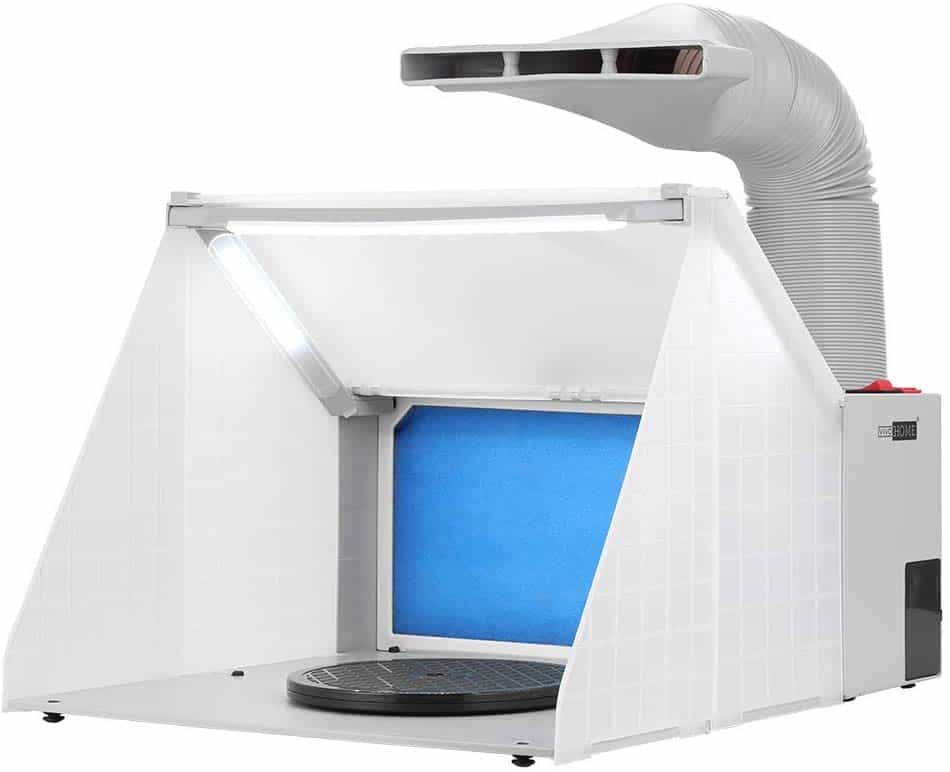
For priming models without getting your hands dirty, you could invest in a painting stand or holder to position your model while you airbrush or spray them. There are quite a few options out there depending on the size and complexity if your miniature. I use my airbrush turntable stand often for a variety of painting tasks, including priming.
You can check out these articles about the best brushes and airbrushes for applying primer to miniatures and models. In general, the best primer brushes and airbrushes for applying paint to miniatures are the prim little secret of model painters.
RELATED: 6 USEFUL PRIMING HACKS FOR MINIATURE PAINTERS
Affordable tools like synthetic bristle brushes or a Badger Patriot 105 airbrush often work as well as their expensive counterparts for priming models, and will likely require less maintenance and last longer, too!
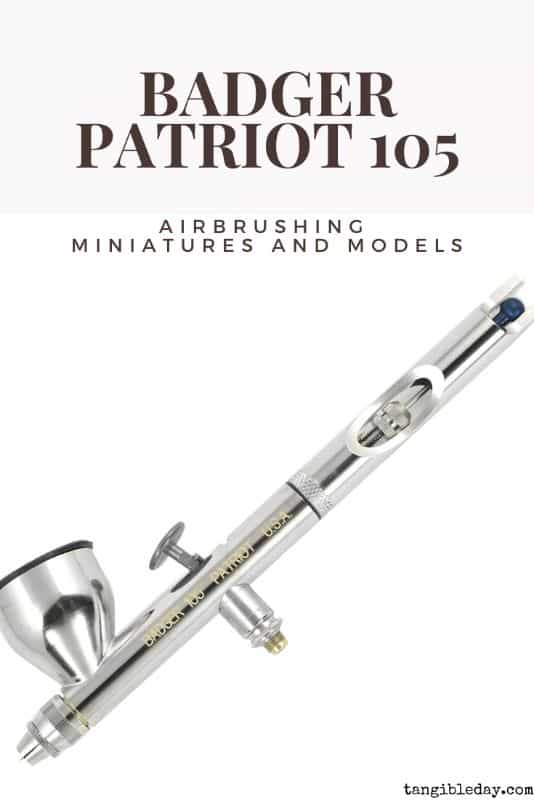
Final Word
You should prime your miniatures before painting them, because it makes everything easier.
Priming miniatures before painting them is one of the best things a tabletop gamer can do. This simple step ensures that paint sticks to the miniature’s surface, protects its durability, and evens out textures for an easier painting experience. It also provides you with an initial color tone over your model so you can observe natural contrast (light and shadow) as you work on the piece–which is essential if you want eye-catching results!
A good primer also smooths out uneven textures, which can help make painting more enjoyable and lets you explore more advanced blending techniques with less frustration. Overall, your models will look better when they’re primed than if they weren’t primed at all.
I hope you found this article helpful! Do you have a favorite primer for painting minis? Let me know if you have any questions. I’d love to help!



Tangible Day on YouTube (Miniatures and More!)

